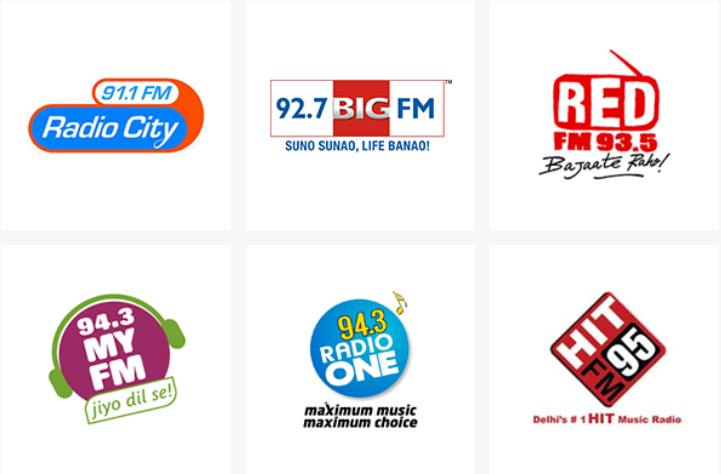Launching a radio advertising campaign can be an exciting endeavour for businesses aiming to connect with their target audience and boost brand visibility. However, the success of such a campaign hinges on more than just creating compelling ads and securing airtime. To truly gauge the impact and return on investment, it is essential to implement a robust system for measuring effectiveness. In this guide, we will explore key strategies and methodologies to help you assess the success of your radio advertising campaign. From tracking website analytics to utilizing unique call-tracking systems, we’ll delve into a range of techniques that will empower you to make data-driven decisions and refine your future marketing strategies.

First, we will look at the key elements that distinguish radio advertising campaigns from other types of advertising campaigns:
1. Audio Format:
Radio advertising relies on audio content, using spoken words, music, sound effects, and jingles to convey messages. Unlike visual mediums such as television or print, radio engages listeners through sound alone.
2. Imaginative Storytelling:
With the absence of visual elements, radio ads often rely on creative storytelling and compelling narratives to capture the audience’s attention. Effective use of voice talent, music, and sound effects is crucial in creating a memorable and impactful message.
3. Targeted Audiences:
Radio stations cater to specific demographics, interests, and geographic areas. Advertisers can select radio stations and time slots that align with their target audience, allowing for precise targeting based on factors such as age, gender, interests, and location.
4. Cost-Effectiveness:
Radio advertising can be a cost-effective option compared to other mediums like television or print. Production costs for radio ads are often lower, and advertisers can choose specific time slots that match their budget constraints.
5. Localized Reach:
Radio advertising is highly effective for localized targeting. Advertisers can focus on specific regions or markets, tailoring their messages to resonate with local audiences. This is particularly beneficial for businesses with geographically specific target markets.
6. Frequency and Repetition:
Radio campaigns often benefit from frequency and repetition. Regularly airing ads during peak times can reinforce the message and increase brand recall. Repetition helps embed the brand or product in the minds of listeners.
7. Flexibility and Timeliness:
Radio provides flexibility in terms of quickly creating and updating ads. Advertisers can respond to changing market conditions, promotions, or events in real-time. This flexibility allows for timely and relevant messaging.
8. Mobile and On-the-Go Reach:
Radio reaches audiences in various settings, such as during commutes, at work, or at home. This mobile and on-the-go reach makes it a valuable medium for advertisers looking to connect with consumers in diverse situations.
While radio advertising has its unique strengths, a comprehensive marketing strategy often involves a mix of different channels, including digital, print, television, and outdoor advertising, depending on the goals of the campaign and the characteristics of the target audience. The choice of medium depends on factors such as budget, campaign objectives, and the preferences and behaviours of the target audience.
Measuring the effectiveness of a radio advertising campaign
The radio advertising campaign is crucial for understanding its impact on your target audience and determining the return on investment (ROI). Here are some steps you can take to measure the effectiveness of your radio advertising campaign:

1. Define Clear Objectives:
Clearly define your advertising objectives before launching the campaign. This could include increasing brand awareness, driving website traffic, generating leads, or increasing sales. Having clear goals will help you measure success more accurately.
2. Use Unique Tracking Mechanisms:
Implement unique tracking mechanisms such as custom URLs, phone numbers, or promo codes that are specific to your radio campaign. This allows you to attribute incoming leads or sales directly to your radio advertising efforts.
3. Conduct Surveys or Market Research:
Use surveys or market research to gather feedback from your target audience. Ask questions related to brand recall, message retention, and the impact of the radio campaign on their purchasing decisions. This qualitative data can provide valuable insights.
4. Monitor Website Analytics:
If your campaign directs listeners to your website, use analytics tools like Google Analytics to track website traffic originating from the radio campaign. Look for increases in unique visitors, page views, and conversion rates during and after the campaign.
5. Track Social Media Engagement:
Monitor social media channels for any increase in engagement, such as likes, shares, comments, and new followers. Use tools to track social media mentions related to your brand or campaign.
6. Utilize Call Tracking Systems:
Implement call tracking systems to monitor the number of calls generated from your radio ads. This can help you understand the impact on lead generation and customer inquiries.
7. Compare Sales Data:
Compare sales data before, during, and after the radio advertising campaign. Look for any noticeable spikes or changes in sales figures that coincide with the campaign period.
8. Measure Brand Metrics:
Track key brand metrics such as brand awareness, perception, and preference before and after the campaign. This can be done through pre- and post-campaign surveys or by analyzing changes in market share.
9. Calculate Return on Investment (ROI):
Determine the ROI by comparing the total cost of the radio campaign to the generated revenue or other desired outcomes. Consider all associated costs, including production, airtime, and tracking mechanisms.
10. Gather Feedback from Internal Teams:
Collect feedback from internal teams, such as sales and customer service, to understand any changes in customer inquiries, feedback, or behaviour that may be attributed to the radio campaign.
Whether it’s through unique tracking mechanisms, website analytics, or customer surveys, the ability to measure and analyze campaign performance provides a roadmap for refining strategies and optimizing outcomes. As you navigate the evolving realm of radio advertising, the knowledge gained from measuring effectiveness will serve as a compass, guiding you toward more impactful and resonant campaigns in the future.
